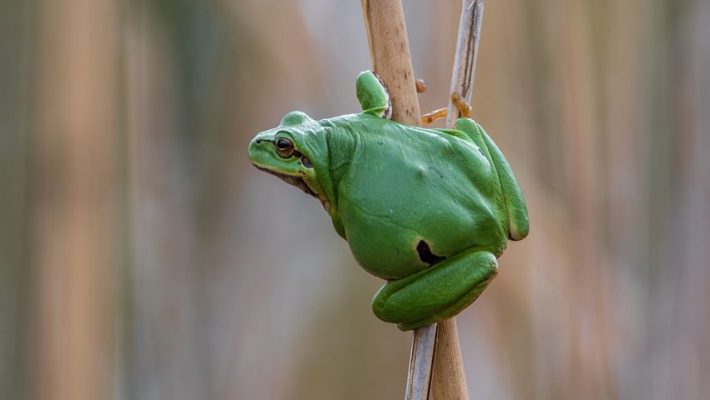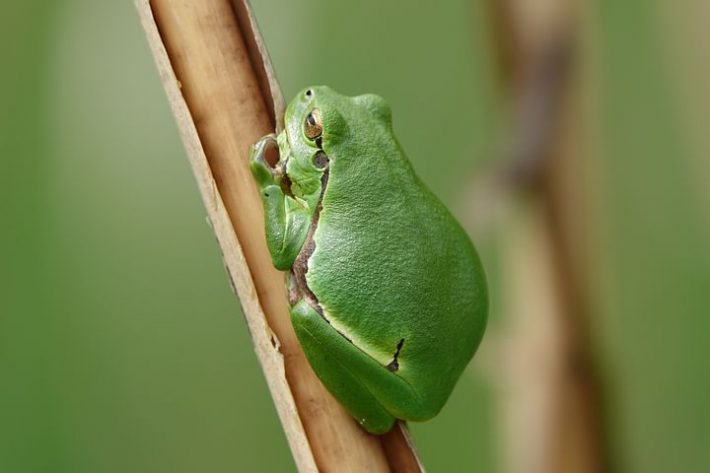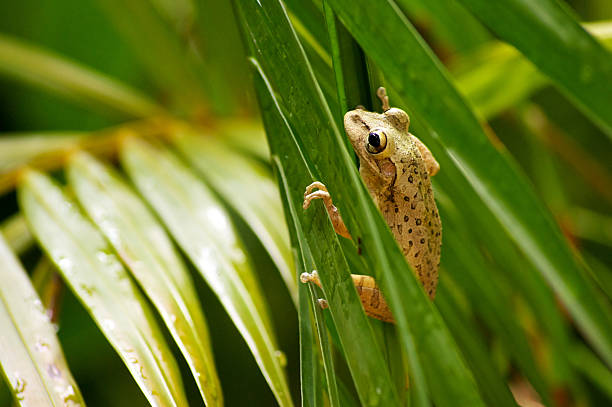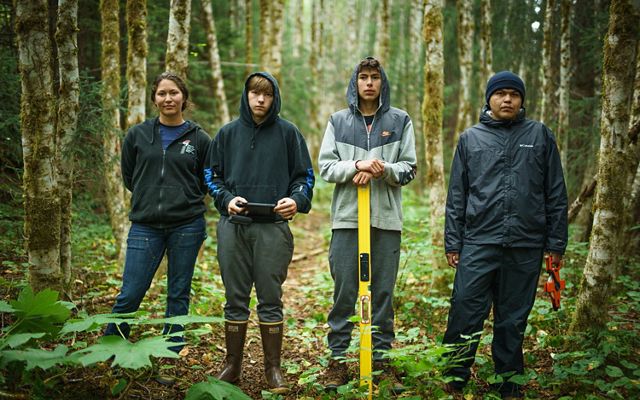A brand new research from the College of Florida investigates how local weather change and the unfold of invasive species can mix to create a twin menace to biodiversity.

Researchers have discovered that these components interacting can affect the connection between native species and their atmosphere. Alex Baecher, lead writer and College of Florida PhD pupil defined “Local weather change is quickly increasing the vary of appropriate circumstances for invasive species.”
Invasive species thrive in unstable or altered circumstances – these have gotten extra frequent as a consequence of local weather change. “Invasive species may also degrade the ecosystems they inhabit, which ends up in a collapse of biodiversity,” continues Baecher.
How do local weather change and invasive species work together?
Researchers studied the Cuban treefrog to know the interplay between local weather change and invasive species. These treefrogs are potential predators/competitors of two different treefrog species native to Florida – inexperienced treefrogs and squirrel treefrogs.

Treefrogs climb and reside above-ground, however they have an inclination to have completely different preferences within the actual peak of their habitat. With the intention to meet their wants, some species reside simply above floor, however others reside a lot larger. Nevertheless, they’ll transfer when sources or circumstances change. Examples embody: if a predator is close by of if there’s water nearer to the bottom.
The research aimed to search out out which issue is extra necessary, rainfall or predation, if each happen concurrently. By recreating a forest ecosystem in local weather managed containers, researchers may observe native treefrog actions while altering water availability and Cuban treefrog presence.
Brett Scheffers, co-author and affiliate professor on the College of Florida, additional defined the group’s strategies and motivations. “We both distributed water evenly from floor to ceiling, or skewed it in direction of one place. Everybody wished to know if frogs have been prepared to shift up and down to trace the modifications in water, and whether or not the presence of predators affected their skill to trace the water.”

Local weather and invasive species mix
The writer’s discovered that Cuban treefrogs negatively impacted native species makes an attempt to trace water vertically. That is doubtless as a consequence of a worry of predation. When local weather circumstances or water sources transfer, Cuban treefrogs might prohibit native treefrogs from accessing sources. This will result in a unfavorable impact on the well being of the native species.
“Our findings problem the long-standing environmental filtering speculation,” explains lead writer Alex Baecher. The speculation argues that local weather and invasive species act independently, so their simultaneous results would trigger no higher hurt to native species. “Utilizing our experiment, researchers can perceive how different invasive species will affect native species underneath unstable circumstances,” continues Baecher.
Article tailored from a Southeast Local weather Adaptation Science Heart press launch.
Learn the total paper right here:
Like what we stand for?
Assist our mission and assist develop the following era of ecologists by donating to the British Ecological Society.
Donate


